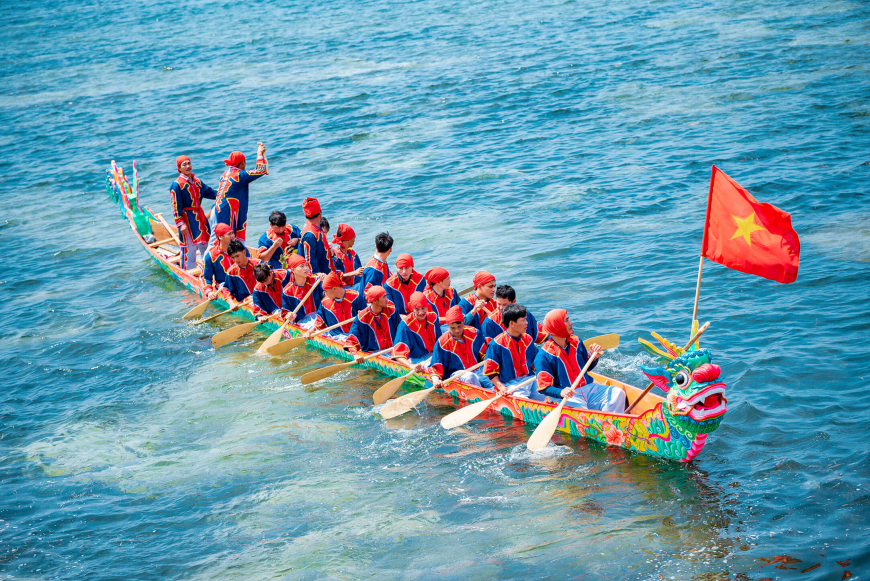Vietnam’s entire Eastern side is coastal, so the country boasts many island destinations. Some of these are remote and less known, such as the mysterious Ly Son island. It’s 30km off-shore from Quảng Ngãi, and is the province’s only island. To get there, you can take a speedboat from Sa Kỳ Port (30-60 minutes); or a ferry from Danang (around two hours). Ly Son is made up of Big Island (Đảo Lớn), Small Island (Đảo Bé) and Mu Cu islet. At only 10m2, the island is small − but hugely fascinating.
Why? Look at aerial photographs of Ly Son. Between small settlements and allium farmlands, you’ll be struck by the imposing mountains, which are actually the edges of large craters. This beautiful hidden landscape formed from several volcanoes that existed millions of years ago. Ly Son is what’s left of volcanic eruptions and tectonic shifts that occurred over a long time. It’s a volcano museum, featuring formations from when hot lava hardened upon meeting the sea.
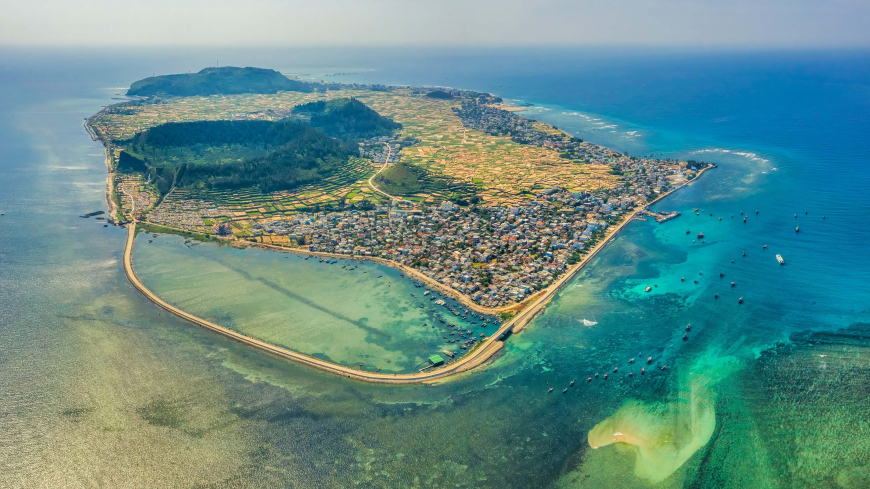
Formed by volcanoes; surrounded by reefs
There are five dormant volcanoes on Ly Son (although scientists have identified dozens around it, some of them submerged). They were named after the five elements: Wood (Hon Soi), Fire (Gieng Tien), Earth (Hon Vung), Metal (Hon Tai) and Water (Thoi Loi). What’s more, they display an unusual variety of volcanic features, such as: tuff rings (on Thoi Loi and Gieng Tien), scoria cones (on Hon Soi and Hon Vung), and a lava-rich slag cone (Hon Tai).
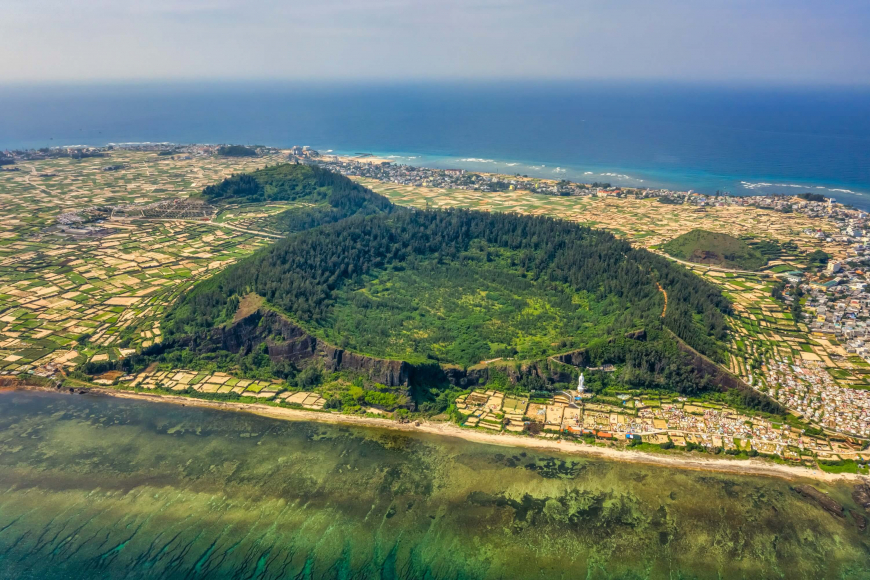
For visitors, this means striking scenery like no other. Picture other-worldly twisted rock formations. Imposing volcanic cliffs with paths and patterns that show where the red magma once ran down. Clean beaches and clear seas against the backdrop of black, jagged rocks. Some of these rock types, such as its ‘beach rocks’, are unique to Ly Son.
In addition, a ring of reefs surrounds the island. There’s plenty of marine life, as well as a unique complex of fossilised coral. Scientists discovered a ‘cemetery’ of massive ‘mill coral’ specimens, which you won’t find anywhere else along Vietnam’s coast. Ly Son has some of the clearest waters in Vietnam, so snorkelling is a must.
What to do in Ly Son
Hop to the islet and smaller island
For a nice stroll, walk the seawall connecting Big Island to the Mu Cu islet. Or take a short boat ride to Small Island (An Binh). Less than 100 families live in colourful settlements on this island, which is small enough to explore by foot. On one of its white-sand beaches, snorkelling and coracle paddling are popular activities.
Discover dramatic beach scenery
Admire beach landscapes like no other. Visit the To Vo Archway, for selfies framed by a volcanic arch at the sea’s edge. Head to the Fishing Cave at Hang Cau to see an impressive 120m-high cliff that’s actually the edge of the Thoi Loi volcano ring.
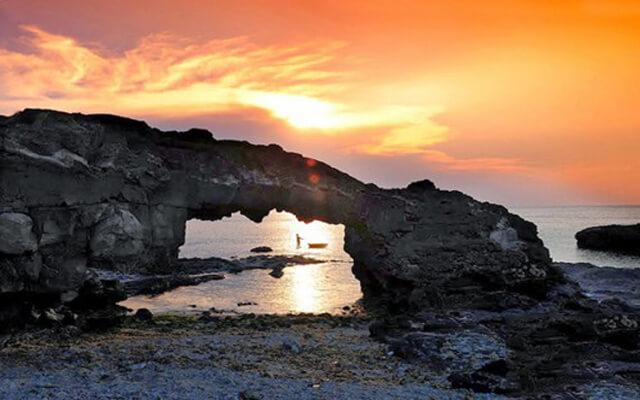
Reach new heights on Thoi Loi Mountain
Enjoy panoramic vistas from vantage points such as the 169m Thoi Loi peak – the edge of the island’s largest crater. On top, there’s a 20m national flagpole; and the freshwater lake that supplies residents with water. Another crater to explore is Gieng Tien Mountain - the second largest, it’s home to the Duc Pagoda, with its beautiful Avalokitesvara Bodhisattva statue. Visit the French colonial Ly Son lighthouse for gorgeous sunset views.
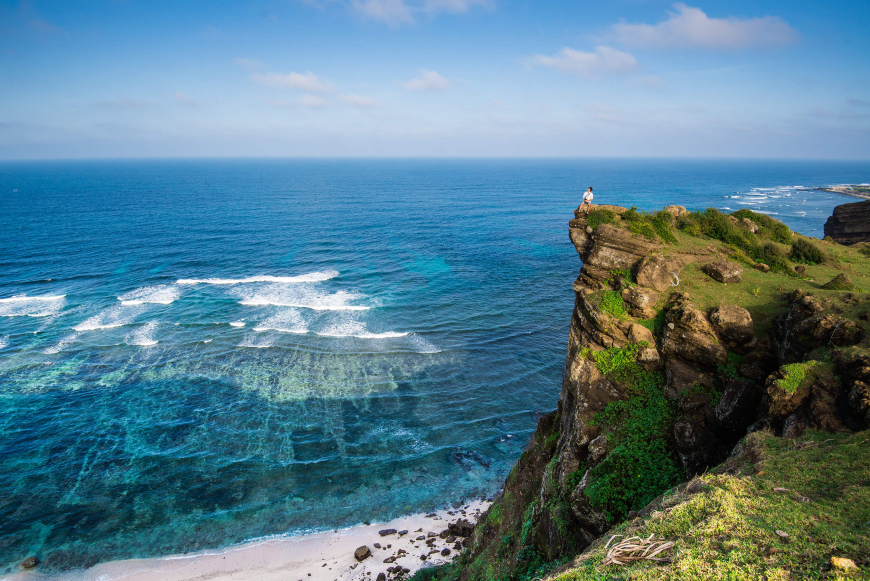
See the spiritual sights
Ly Son has over 50 shrines and temples, including a 400-year-old cave pagoda that’s 24 metres deep. Hang Pagoda (“the stone pagoda from heaven”) is guarded by a sculpture of Guanyin, the Goddess of Compassion. You should also visit the well-preserved early house temples of the island, An Vinh and An Hai, built in the Nguyen dynasty’s architectural style.
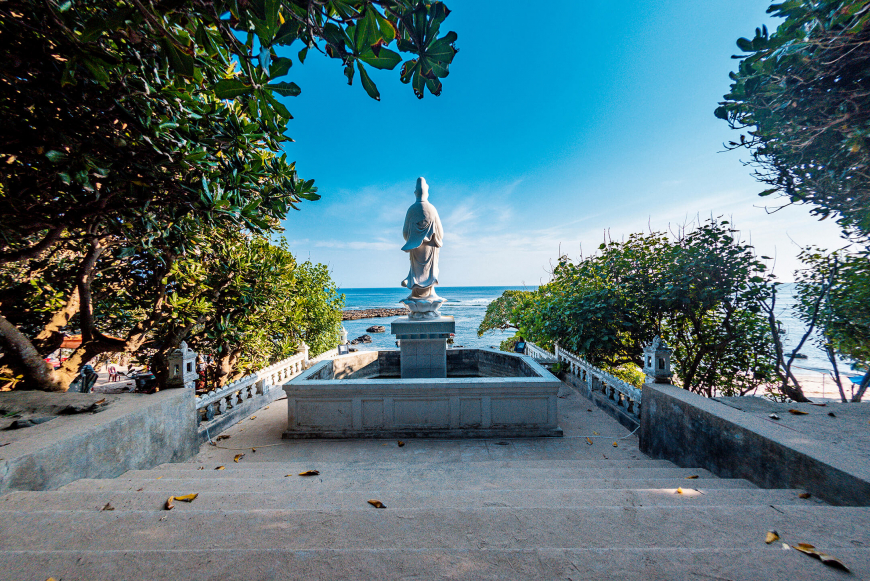
Visit the whale temples
Ly Son has seven temples dedicated to these Gods of the Sea and is considered the largest museum of whale skeletons in the country. The New Whale Temples house the bones of the largest whale skeleton (28,7m) in Vietnam.
Sample the local fare
Go to the Ly Son night market for local specialities, such as the island’s signature garlic salad. Garlic is the island’s main industry, and it’s considered the best in Vietnam. Its flavour comes from the unique island conditions, as it’s grown with rich basaltic soil, seaweed fertiliser and coral sand.
Ly Son Island is not only famous for its volcanoes museum and garlic, but also a heavenly land of the ocean. Here offers visitors a feast of fresh seafood to enjoy.
Clams, abalones, oysters, cockles, mussels, and scallops are all popular that can be found in any coastal area of Vietnam. However, an alternative choice of seafood specialty of Ly Son that will, for sure, please even the daintiest tourists is the Sea urchin. The enhanced sweetness, saltiness and lusciousness of the heated dish will definitely leave you speechless. Another type of snail that Ly Son takes pride in is the conch. For the best experience, conches are often grilled or sautéed with chili and lemongrass. What else? Spanner crab and giant clam are among the must-try for anyone who plans to visit Ly Son. In search for a desert afterward? Banh it la gai (glutinous rice cake with ramie leaves), a fine combination between the strong aroma of the sticky rice, and the sweet, fatty taste of sugar and coconut extract will satisfy any soul that craves for a snack.
Stay for the special days
The 200-year-old soldier replacement ceremony, the Khao Le The Linh Hoang Sa Festival, is something truly unique. During the third lunar month, locals honour the soldiers who protected Truong Sa and Hoang Sa Islands. At the beginning of the lunar year, there’s the colourful Tu Linh (Four Holy Beasts) boat-race festival. Eight boats decorated as the four holy beasts (dragon; unicorn; turtle; and phoenix) battle it out to emerge as the winners.
